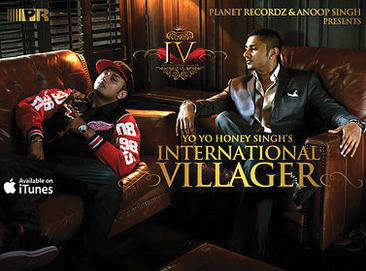Music Production & the Rise of Regional Music
by Abhimanyu Malhotra, The Sonic Arts Co.

The last few years have witnessed an exponential growth in the range of music released by Indian artists. From Marathi or Bengali rap music to rock music in Malayalam, regional flavours are trending and are pushing boundaries both in terms of song-writing and production. Genres are seeing an expansion in terms of audiences, and music styles are becoming more accessible since they are married with local languages. The biggest advantage that an artist has in focusing on region based music is unlocking new audiences and exposing them to styles that would otherwise sound alien to them. The relentless momentum of regional music is further reflected by the fact that popular streaming platforms have launched their own language-based channels and playlists. Everyone from iTunes, Spotify, Gaana, Hungama and more are facilitating the growth of regional music through curated playlists and dedicated channels. Such music that is targeted at say, Marathi speaking or Hindi speaking audiences, can result in amassing a massive number of streams through these online music platforms. This is an integral part of the industry ecosystem that allows the regional genres to flourish and even reach new audiences around the globe. A perfect example of this is the rise of Punjabi Hip-Hop and Punjabi Bass popularised by the likes of Badshah, Yo Yo Honey Singh, Guru Randhawa and others. Such artists have achieved stardom and popularity at breakneck speeds and their popularity has skyrocketed over just a handful of releases. This month we will take a look at popular Punjabi releases, break them down in terms of production and songwriting in order to understand what made them different, and how they become so popular.
The 808 kick drum that defined hip hop in the 90s is a massive sub bass sound with a punchy attack that was synthesised by the Roland TR 808 machine. It became the staple for many hip hop producers and also the signature sound for the genre
The current trend can be traced back to 2011 when Yo Yo Honey Singh released a single along with Diljit Dosanjh named Lak 28 Kudi that reached number 1 on the BBC Asian charts. His full length LP International Villager that released the same year has since become the highest grossing Punjabi album of all time. With songs like Angrezi Beat, Dope Shop and Gabru, the album become Singh’s calling card in BolIywood and saw a flood of offers to license his music for films, which of course became a trend in it’s own right. His formula for success was a combination of infectious Punjabi rap along with electronic beats that were mixed in typical EDM style. Now EDM was also reaching it’s peak popularity at the time, and that genre was characterised by heavy low-end mixes with a big focus on kick and bass. They also feature intense build ups and drops with the beats, and feature catchy melodies voiced by reverb-soaked synthesizers. The style blended seamlessly with Punjabi vocals, and the result was highly-energetic dance music that just sounded different to it’s predecessors. What made it different was the mix, and the fundamental change was that the focus of the mix was now the kick drum and not the vocals. Vocals are usually the cornerstone of most music mixes, however in EDM they become second to the kick and bass elements. These mixes were being built around the kick and rhythm elements rather than being built around the vocal. This technical shift allowed for dance music to become louder and more hard hitting than before. This is what attracted Bollywood to Singh’s music, the ability to make item number songs really pop out and elevated in terms of energy. All composition and programming on the album was done by Honey Singh, although some of the lyricists included Badshah and Raftaar who then proceeded to take centre stage with their own music down the line.
Coming from a more traditional background than Honey Singh, Diljit Dosanjh truly fused the contemporary styles with his roots and culture. His ability to write catchy hooks opened the door to Bollywood directors casting him not only as the lead, but also as the singer for most of his movie’s soundtracks. What made him different was his dialect of Punjabi and the authenticity in it’s delivery. He captured the essence of folk and re-created it with contemporary music production. He brought out all the nuances and stylisations of Punjabi along with playful slang that just made his audiences connect with him and his music. With album releases dating back to 2000, his discography is large and he continues to release music alongside his movies that amass millions of views in no time at all.

LP International Villager became the highest grossing Punjabi album of all time. With songs like Angrezi Beat, Dope Shop and Gabru, the album become Honey Singh’s calling card in BolIywood and saw a flood of offers to license his music for films
Advancing and evolving music production and mixing techniques became the reason behind the success of such Punjabi artists. Finding the right balance of ideas and techniques became a quest for a number of artists that followed in the wake of Singh and Dosanjh. Punjabi artists embraced this new marriage of EDM with their culture and the number of artists releasing such music was on the rise. With a front row seat to Honey Singh’s workflow, Badshah is another cornerstone in Punjabi music. His formula in essence was similar to Singh’s, however switching up the ingredients to those that actually defined a whole era of music and started the hip-hop movement. Collaborating with Dosanjh, Singh, Manj Musik, Aastha Gill and more, Badshah’s style immediately had an element of catchy commerciality with pure punjabi flavours. Composing and producing tracks like Wakhra Swag, Badshah unleashed the power of the cornerstone of hip hop production and combined it with Punjabi. The 808 kick drum that defined hip hop in the 90s is a massive sub bass sound with a punchy attack that was synthesised by the Roland TR 808 machine. It became the staple for many hip hop producers and also the signature sound for the genre. With its fundamental harmonic below 60Hz, an 808 kick drum takes up a lot of space in the acoustic range of any mix. It demands headroom both in terms of frequency and loudness in order to shine and deliver it’s punch. Most Punjabi and Bollywood music was heavily layered with instruments struggling to breathe and find space. Badshah changed that with Wakhra Swag, which was the most minimal yet heavy mix that been heard till then. With only a simple vocal and few layers of percussion and melodic elements, the 808 in the track did it’s job of delivering a bass heavy Punjabi dance experience, the likes of which had not been heard before. Badshah also introduced hip hop nuances into Punjabi slang, and further facilitated the merging of the two cultures.
The rise of such artists and their innovative styles sparked off a whole generation of Punjabi rappers that started entering the limelight. While the commercial platforms enabled a handful of them to rise to stardom, the indie scene was witnessing the emergence of the genre. And soon a handful of artists would start to blur the lines between indie and commercial, allowing them to crossover between the two faces of the music industry that otherwise co-existing in parallel and seldom intersect. Artists like Guru Randhawa, Raftaar, Ikka and producers like Manj Musik and Deep Jandu continue to propel this genre further, releasing music with big budget films as well as having their share of indie releases. The quality of the production from the underground and indie scene is no less than the commercial. Producers and artists like GD47, Lil Golu, Dr. Love are pushing production quality and keeping it consistent with industry standards.
An Unequal Music is a column that highlights quality Indian music releases across genres and styles. The objective is to discuss each release from a technical and creative perspective and what makes it special and unique. My process is to breakdown the production components, talk about musicality, arrangement and instrumentation. My background as a music producer began a decade ago in Los Angeles where I had the opportunity to work with award-winning studios and bands. I am currently a full-time music producer working with directors and artists across different genres.
www.producedbyabhi.com
With Hip Hop now becoming a craze across India, Punjabi rappers have planted their flag and are definitely here to stay, if not define the future of the trend.